How to Make DIY Essential Oil Perfume + Recipes
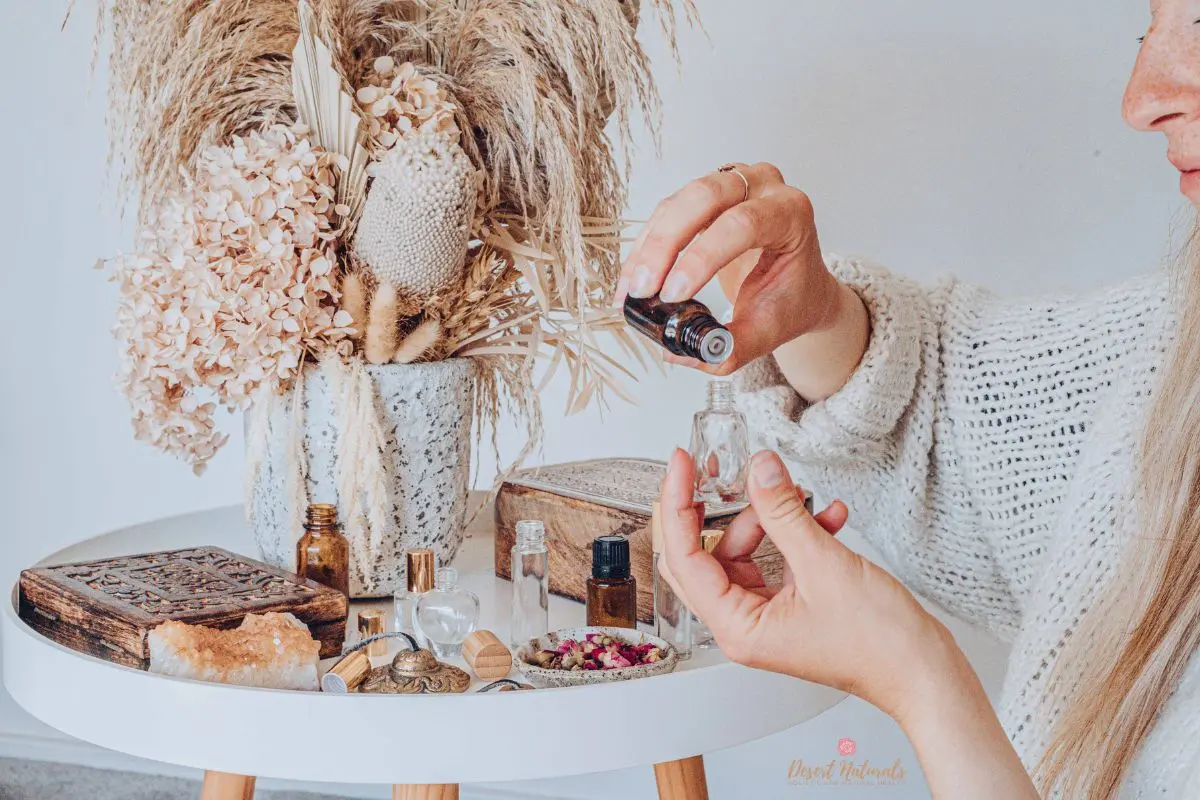
DIY Essential Oil Spray Perfume Recipes
Looking for an all natural essential oil perfume recipe? Keep reading to learn how to make a fast and easy DIY Essential Oil Perfume using one of the essential oil perfume recipes in this article.
The perfume industry is a multi-billion dollar industry, but it is also one of the most toxic industries. Typical store-bought perfumes are made with synthetic chemicals and fragrances that have been linked to cancer, asthma, allergies, skin irritation and other health problems.
Essential oils offer an alternative to perfumes. They are natural and contain no artificial ingredients or fragrance. Essential oils can be used in many different ways – they can be diluted in carrier oils like coconut oil or jojoba oil to make a natural perfume or lotion, or they can be diffused in the air for aromatherapy purposes.
The use of essential oils for perfume dates back to ancient Egypt. The Egyptians used perfumed oils and herbs to improve their mood, heal diseases, and maintain their appearance. These are the same reasons why people today use essential oils for perfume.
Essential oil perfume is a better choice than traditional perfumes because it is healthier and safer.
Pure Essential oils are directly from the plant and therefore made up of natural ingredients that have been proven to be more effective than synthetic fragrances. Also, they do not contain any harmful substances like phthalates or parabens that may pose health risks when applied on the skin.
Be sure to Save to Pinterest so you can find it again later
Pin for later
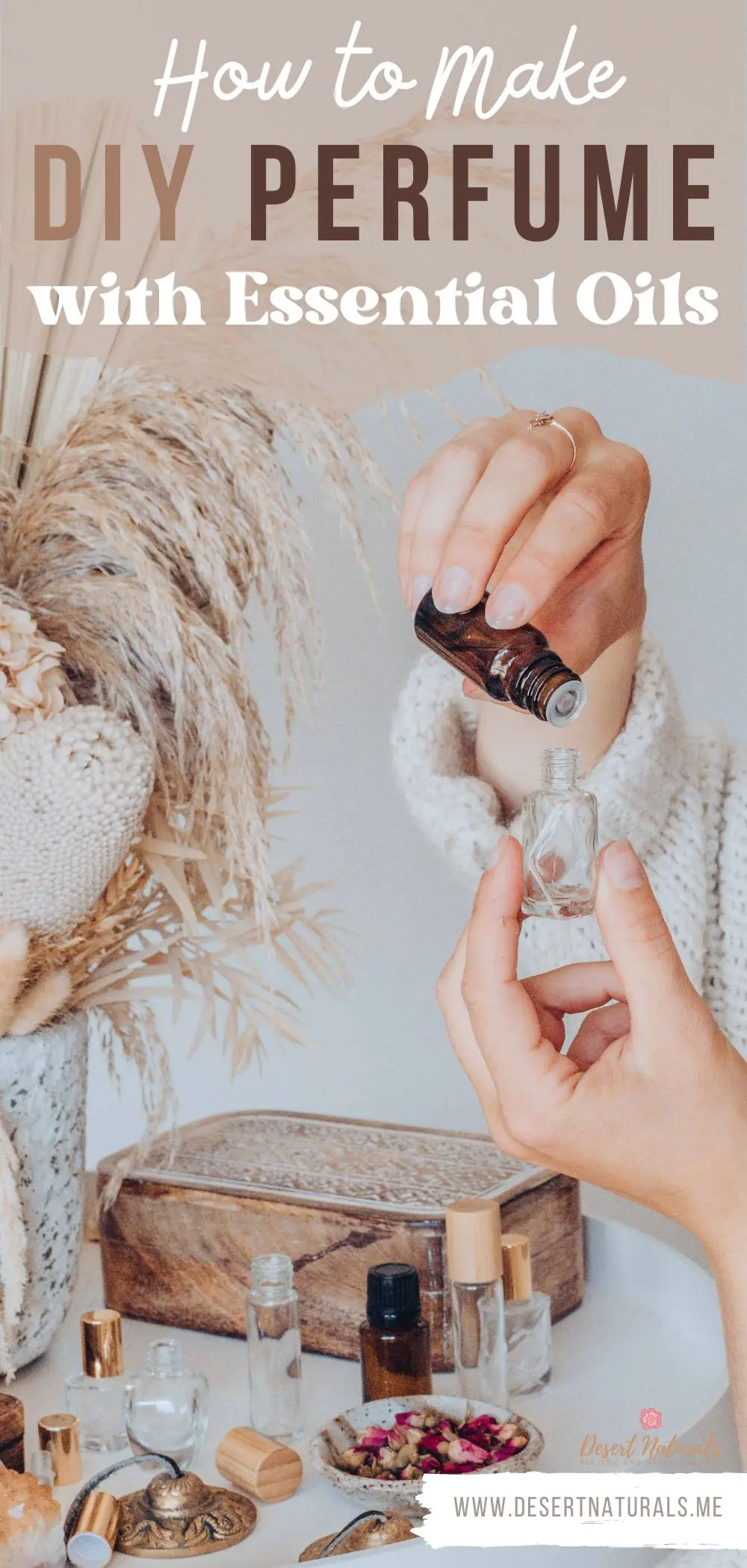
Essential oil based perfumes are especially fun because they allow those of us who don’t care for the strong aroma of synthetic perfumes to indulge in our own, signature scents.
They offer a more subtle option for those who like to smell good but don’t appreciate being overwhelmed by perfume from across the room. If you wear essential oil perfumes, only those with whom you come into close contact will be able to share in your enjoyment of these special floral, herbal and spicy mixes.
If you get headaches from regular perfumes, you should definitely try out essential oil based blends to see if you’re able to tolerate these any better.
You can easily come up with your own essential oil perfume blends using different essential oils.
Perfume is fun to mix, but it takes about a month to age a perfume blend that you concoct at home. Aging allows the scents to meld together and the alcohol to fade, so that the end result is a more blended mix, where, from a sensory perspective, you can’t really tell where one flavor (note) of the perfume ends and the next begins.
If you’d like to experiment a bit with essential oil based perfumes at home, you may want to do a few different mixes all in one session, as you won’t be able to put them to use for quite a while after you make them.
Since it really doesn’t take more than a few drops of oil to create a perfume, you can gather together some of your friends who have their own essential oil collections, and host a “perfume making party” where you can share a little of this and that to add variety and make it fun.
I use affiliate links in this article. If you click a link and make a purchase, I may earn a small commission which goes towards the cost of running this website.
The Composition of an Essential Oil Perfume
To make perfume from essential oils, you should probably have at least a small collection of a variety of oils – some base notes, some middle and some top (see list of examples, below.)
Each perfume blend should ideally contain a woodsy base note which adds depth; a middle note; and a top note which is typically very pungent. Of course, you can make up your own recipes that do not follow this suggestion, but you’ll probably find that they don’t seem balanced without this harmonious, three-note “chord” of scents.
The base note of your homemade perfume blend will contain the greatest amount of essential oil as compared to the middle and top notes. The top notes will consist of the smallest amount of essential oil. The middle notes will make up the most amount of essential oil.
Base notes of essential oil perfumes
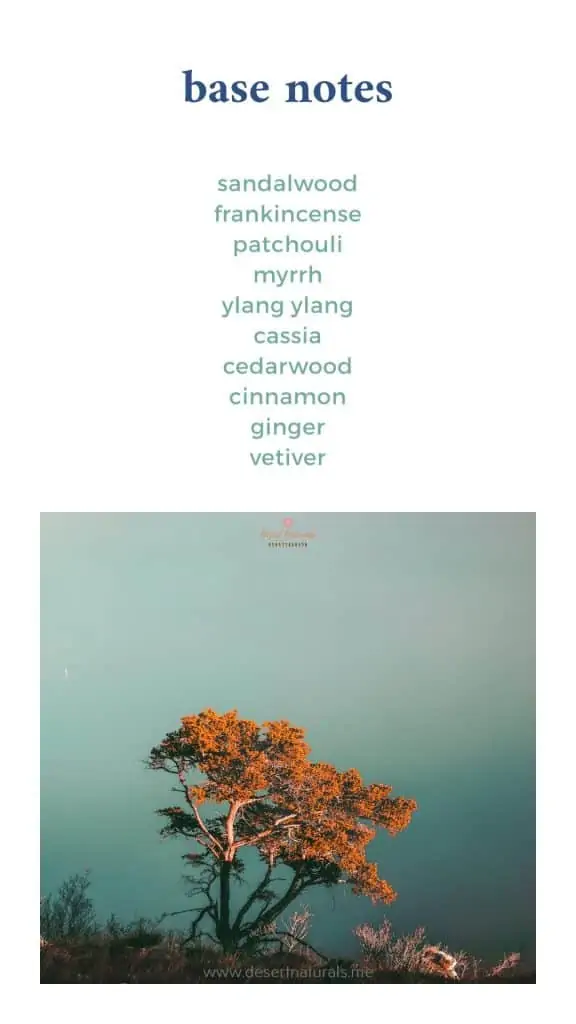
Base notes are the smells that will stay with you the longest and are typically the anchor for the perfume blend.
Common essential oil bases for perfumes include:
- Sandalwood
- Frankincense
- Myrrh
- Cassia
- Cinnamon
- Ginger
- Patchouli
- Vetiver
- Vanilla
- Cedarwood
- Ylang Ylang
Middle notes of essential oil perfumes:
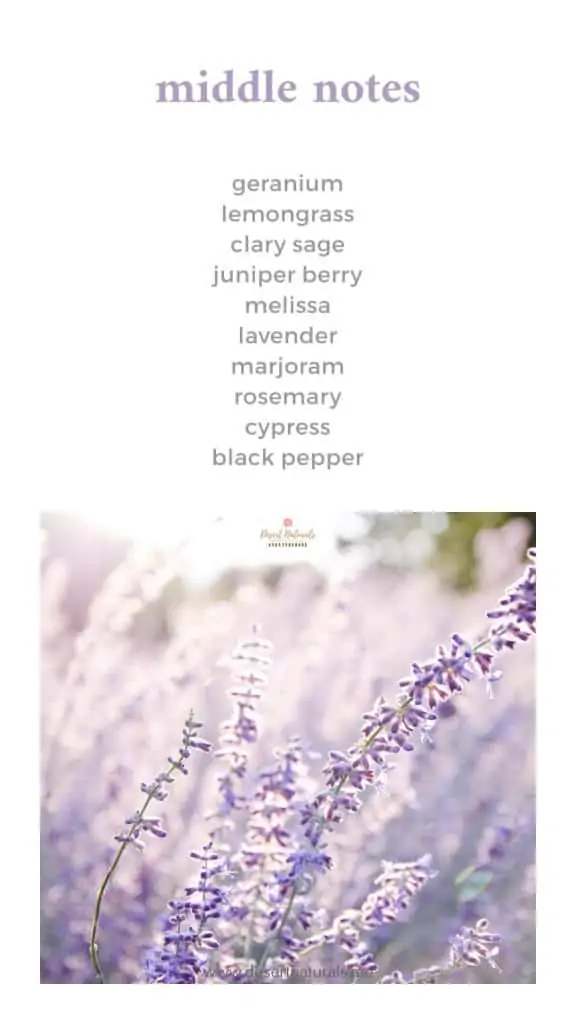
Middle notes of essential oil perfumes carry through the mid-range, sort of like the melody in a song. These will make up the largest portion of your perfume.
Common middle-note scents are:
- Rose
- Geranium
- Lavender
- Melissa
- Nutmeg
- Rosemary
- Pine
- Chamomile
- Clove
- Clary sage
- Honeysuckle
- Lemongrass
- Juniper Berry
- Black Pepper
Top notes of essential oil perfumes
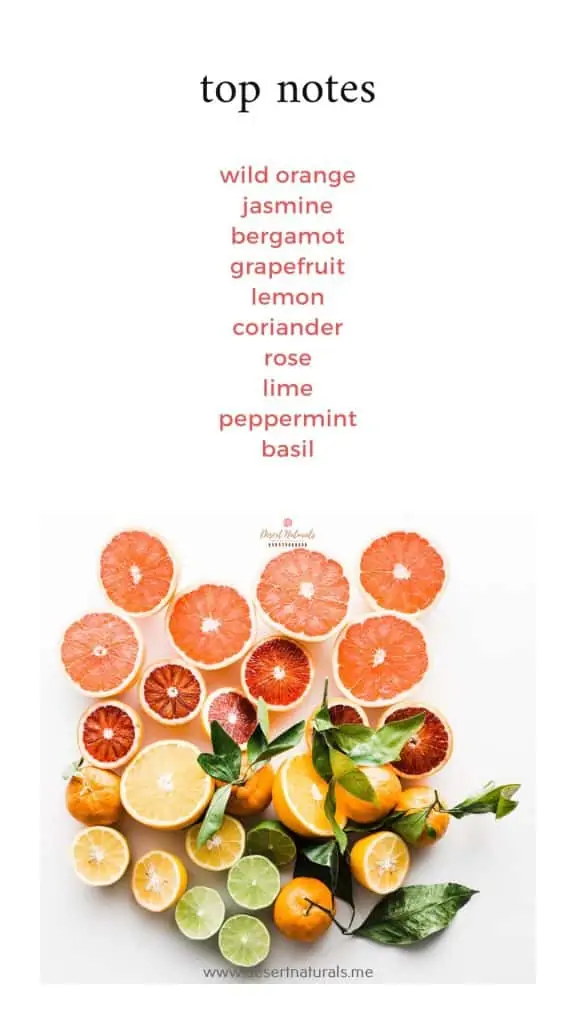
Top notes take front and center in the order of which aromas hit your olfactory nerves in which order. They’re sharper to the nose, and they require a smaller amount in comparison to base and middle notes of essential oil perfumes
Some examples of top notes are:
- Bergamot
- Jasmine
- Neroli
- Basil
- Coriander
- Cinnamon
- Lemon
- Lime
- Orange
- Grapefruit
- Lemon verbena
- Peppermint
Supplies for your DIY Essential Oil Perfume
Perfume Bottle Roller on Amazon
These 8ml perfume bottle style rollers are really cute. You can use the perfume recipes below to make a roller instead of a spray and use these.
- Material: thick glass bottle body and stainless steel roll balls; Color: clear bottles and gold cap;Package content:10x8ml roller bottles.
Carrier Oil
You’ll need a carrier oil. If you already have some from another DIY project, use that. Good choices include Jojoba Oil, Fractionated Coconut Oil, or Argan oil.
This is the Jojoba Oil that I use:
- Bulk Size with Pump, Great Value – Now you get premium jojoba oil, at a great value for all your DIY Beauty needs.
Witch Hazel
The last ingredient you’ll need is Witch Hazel. Be sure to use an unscented witch hazel. I like this one because it has no other ingredients. Many have aloe or other additives.
- Helps to minimize large pores and reduce fine lines without drying.
Essential Oil Perfume Blend Recipes
Here are seven essential oil natural perfume recipes to use as suggestions if you don’t know where to start.
Be sure to use pure essential oil that is therapeutic grade and not fragrance oils because those are no different than store bought perfume. You also won’t get the same effect if using inferior oils. They won’t have as strong of a smell and you’ll likely be disappointed.
Use these DIY Perfume recipes as a starting point to come up with your own essential oil blend to create your signature scent.
It’s really fun to try new essential oil combinations to come with with your own natural perfume.
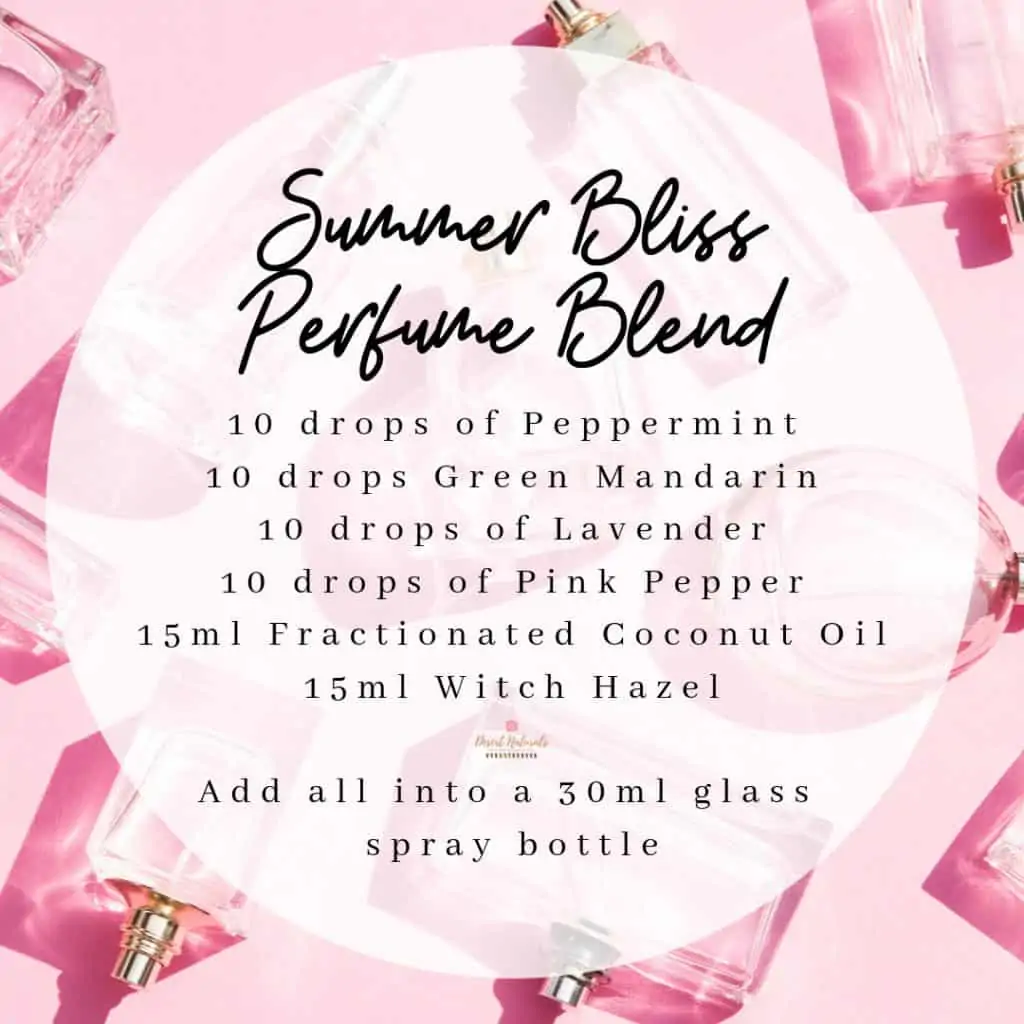
- 10 drops Peppermint
- 10 drops Green Mandarin
- 10 drops Lavender
- 10 drops Pink Pepper
- 15 ml Fractionated Coconut Oil (or jojoba)
- Witch Hazel

- 15 drops Tangerine
- 8 drops Ylang Ylang
- Fractionated Coconut Oil
- Witch Hazel
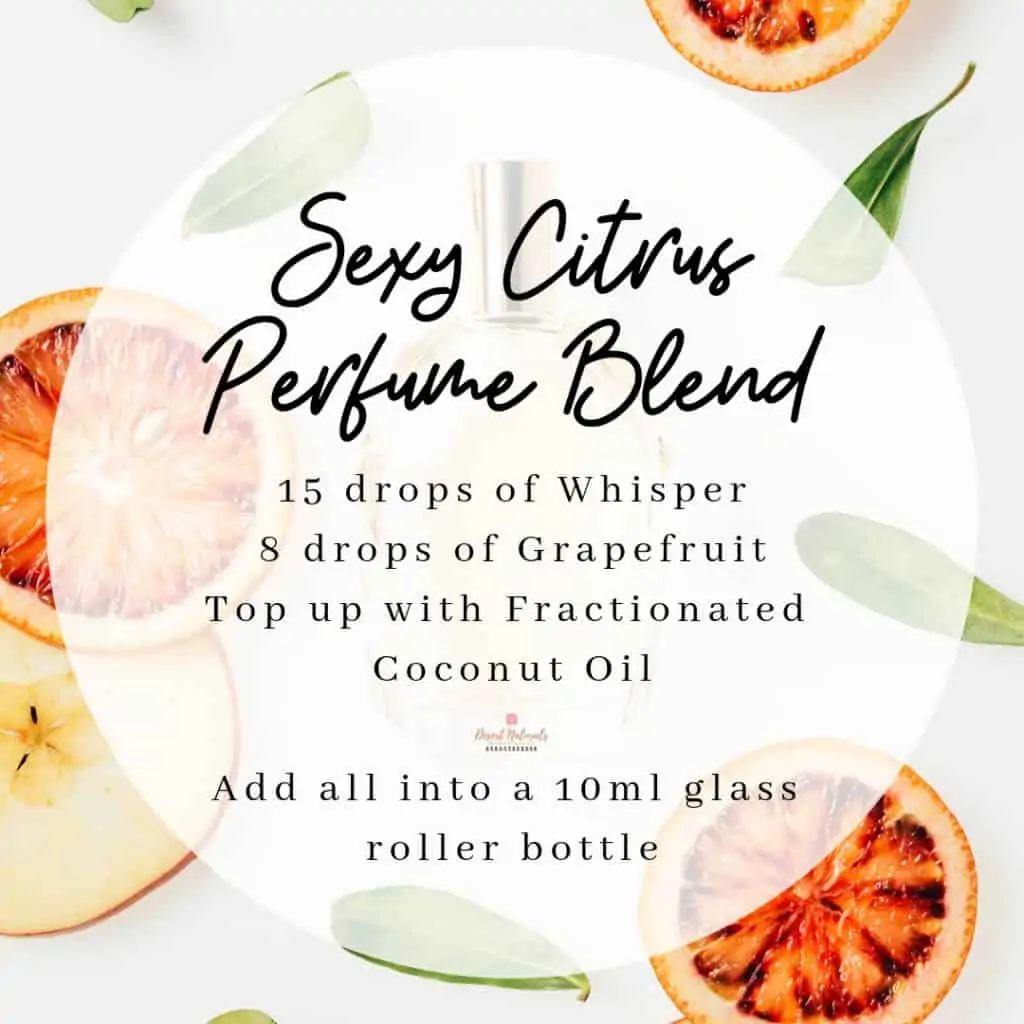
- 15 drops doTERRA Whisper blend
- 8 drops Grapefruit
- Fractionated Coconut Oil or Jojoba
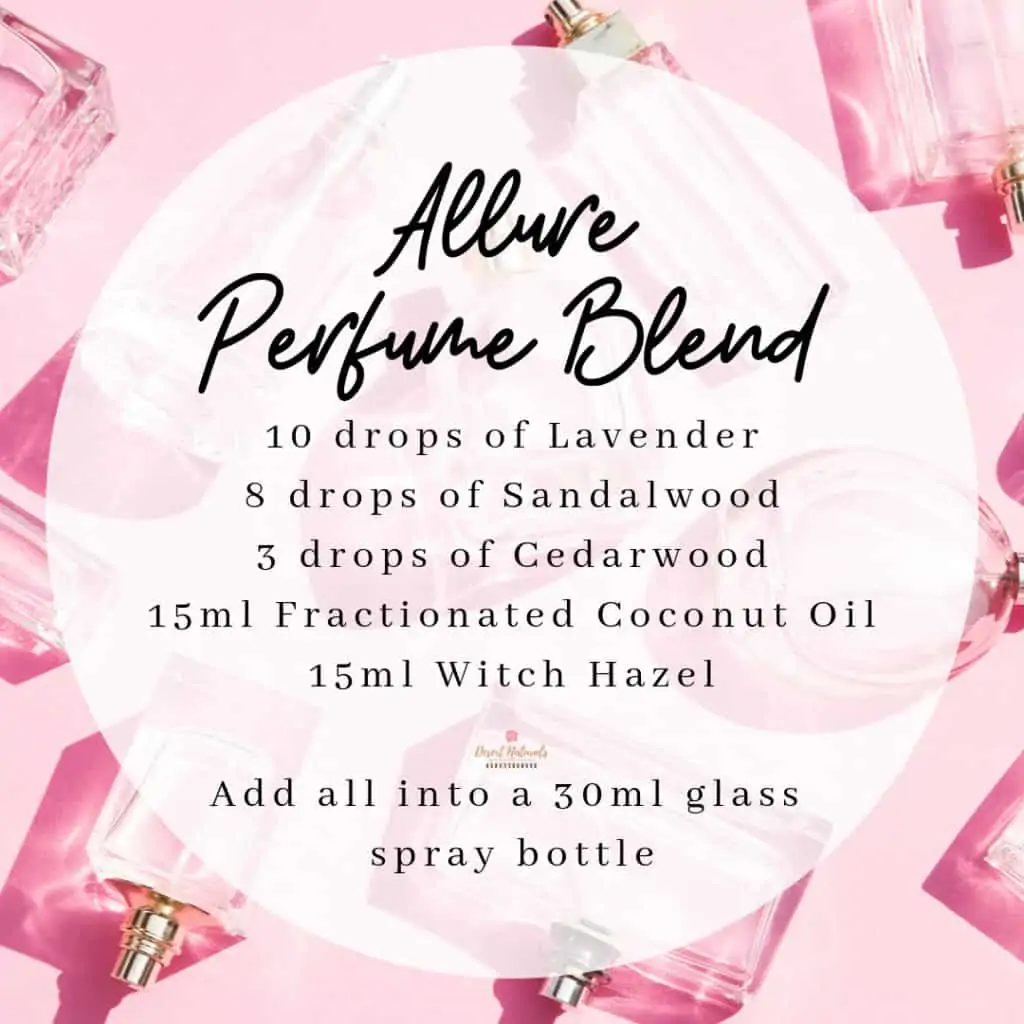
- 10 drops Lavender
- 8 drops Sandalwood
- 3 drops Cedarwood
- 15 ml fractionated coconut oil
- 15ml witch hazel
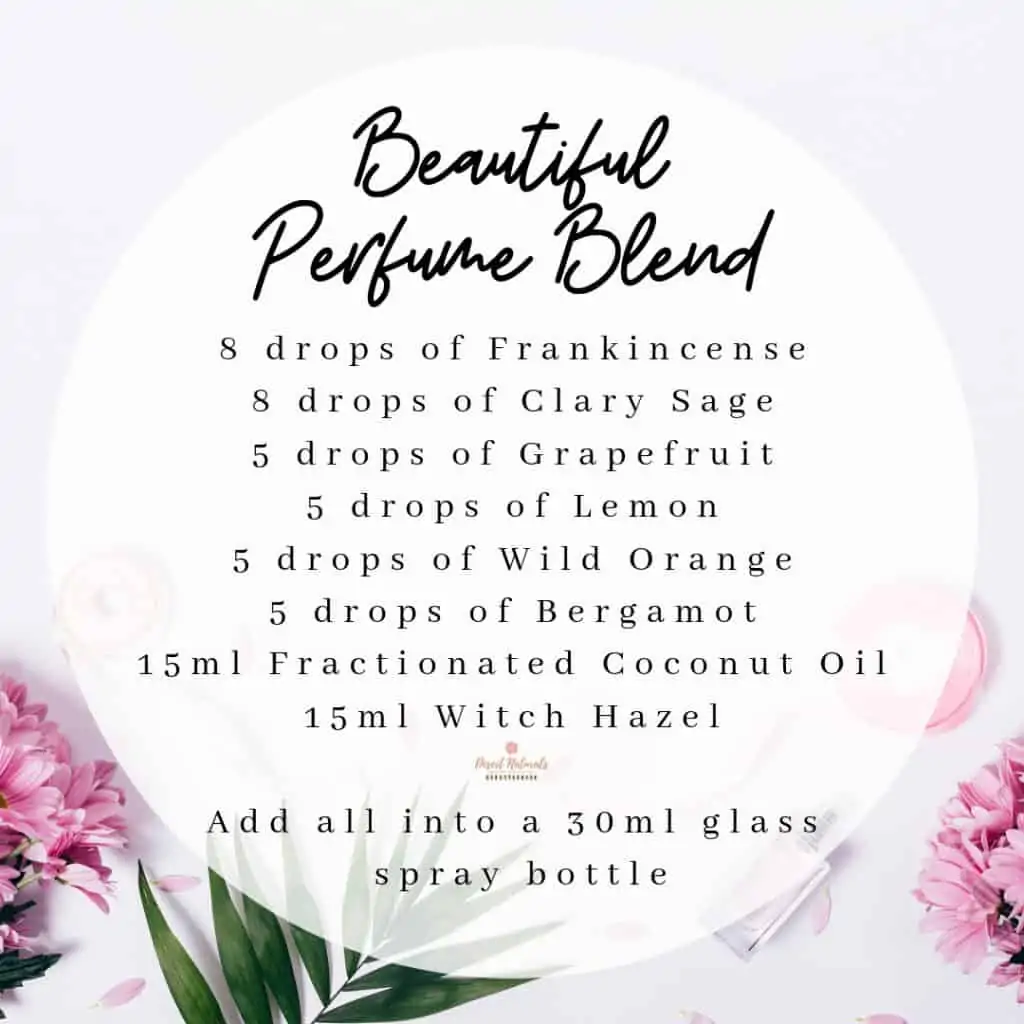
- 8 drops Frankincense
- 8 drops Clary Sage
- 5 drops Grapefruit
- 5 drops Lemon
- 5 drops Wild Orange
- 5 drops Bergamot
- Witch Hazel
- Fractionated Coconut Oil (or jojoba)
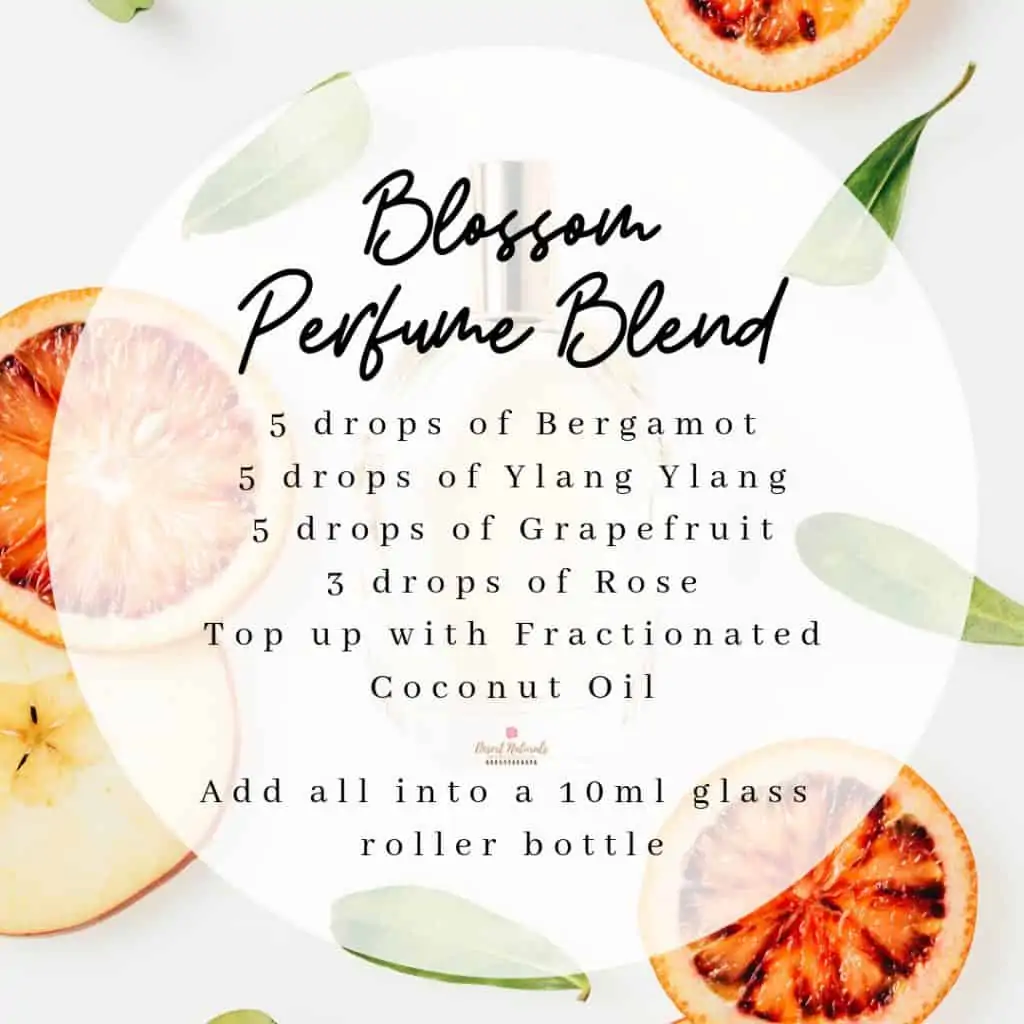
- 5 drops Bergamot
- 5 drops Ylang Ylang
- 5 drops Grapefruit
- 3 drops Rose
Jojoba Oil or Fractionated Coconut Oil
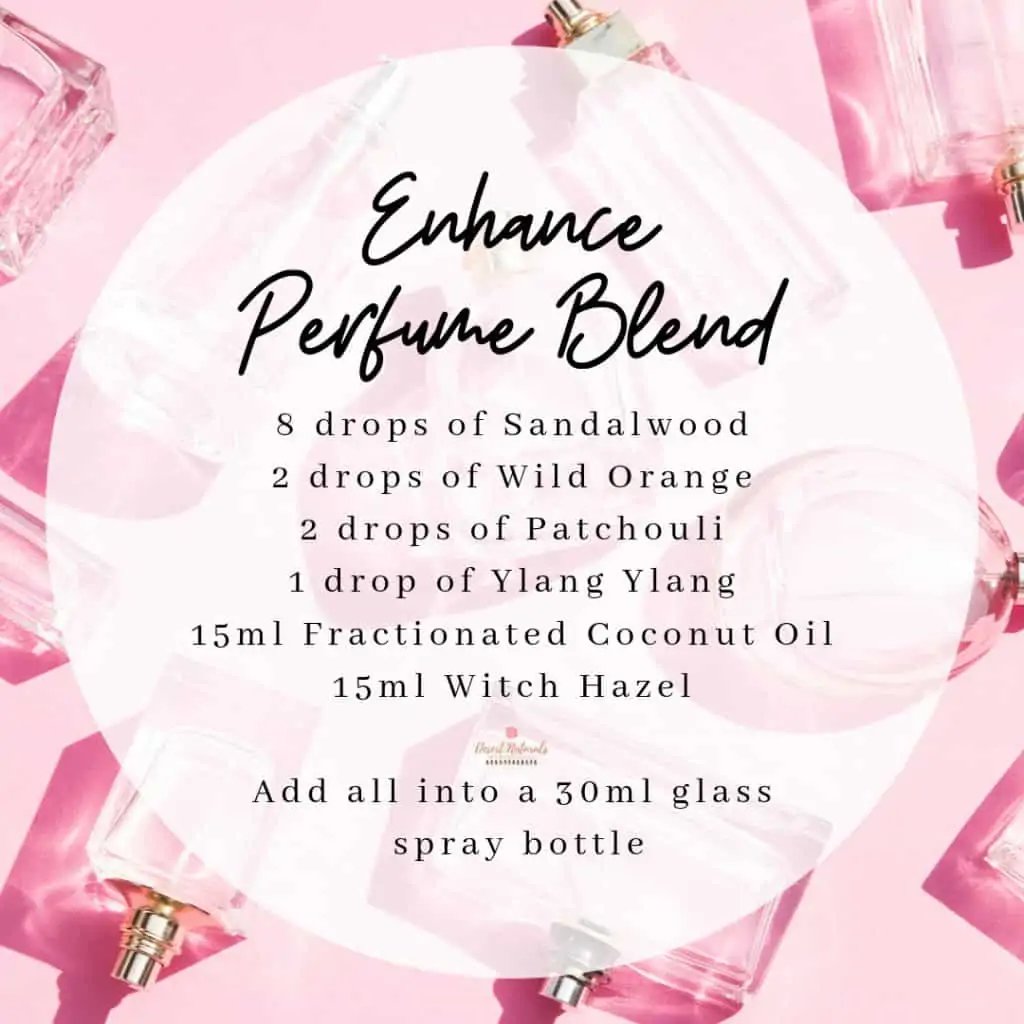
- 8 drops Sandalwood
- 2 drops Wild Orange
- 2 drops Patchouli
- 1 drop Ylang Ylang
- Fractionated Coconut Oil (or Jojoba)
- Witch Hazel
When it comes to essential oils, don’t be afraid to experiment. The above recipes are merely suggestions based on the potency of certain oils and how they combine with other oils. If you’re new to essential oils, keep an open mind and see what happens.
How to Make and Blend Your Essential Oil Perfume Blend
You can choose to mix your essential oil perfume right in the bottle you’ll be storing it in, or you can use a glass mixing bowl.
Follow the guidelines above using base notes, middle notes, and top notes.
Or, simply use your favorite blend of oils. For example, a blend of Lavender and vanilla essential oil as a perfume is a popular combination.
You may be interested in this blog post on Carrier Oils to learn more about the best carrier oil for your skin type.
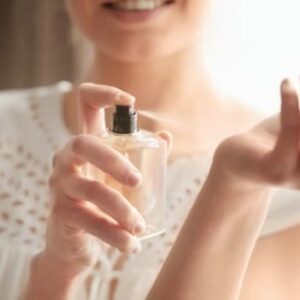
DIY Essential Oil Perfume Recipes
Equipment
Ingredients
- 15 – 30 drops Essential Oil Can use any combination of top notes, middles, notes, and base notes. Use more drops for a stronger scent, less drops for a more subtle scent. See the blend suggestions in the article.
- Witch Hazel
- Carrier Oil ex: Jojoba Oil or Fractionated Coconut Oil
Instructions
- Add your essential oils to your empty glass perfume bottle
- Add coconut oil to your bottle
- Top off the bottle with witch hazel
- Attach the topper to your bottle and gently shake to combine contents.
- Let your perfume sit for 30 days before using.
- Store in a cool dark place.
- To use, apply to pulse points (inside of wrists, behind ears, base of skull on neck)
Do you have a favorite essential oil perfume recipe? Share it in the comments! I love to hear new ideas.
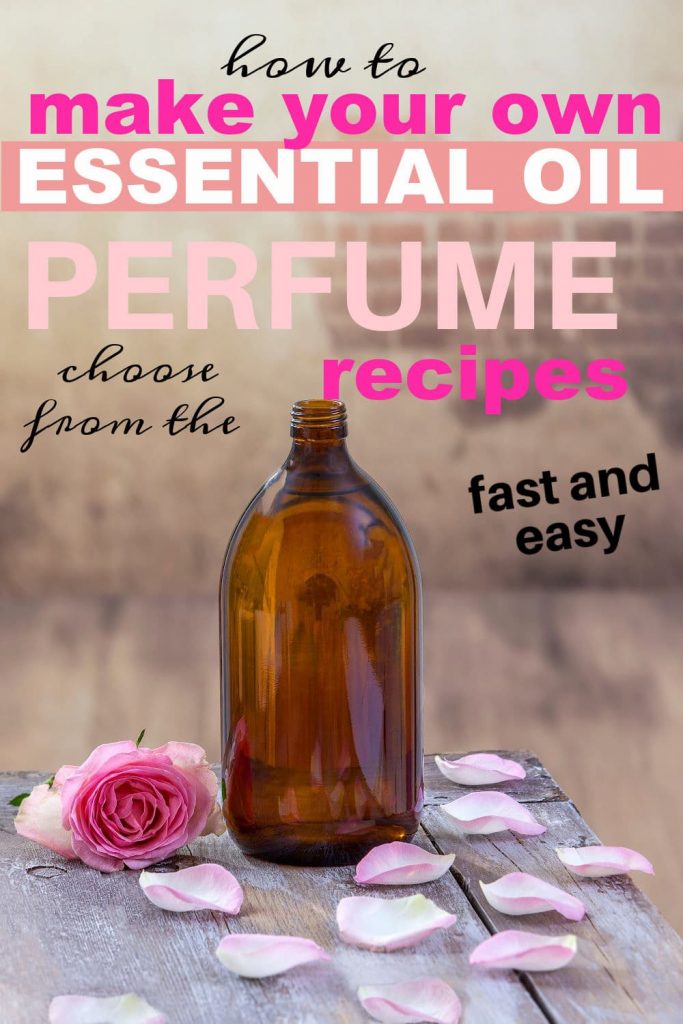
Related Article – DIY Men’s Essential Oil Cologne Recipes
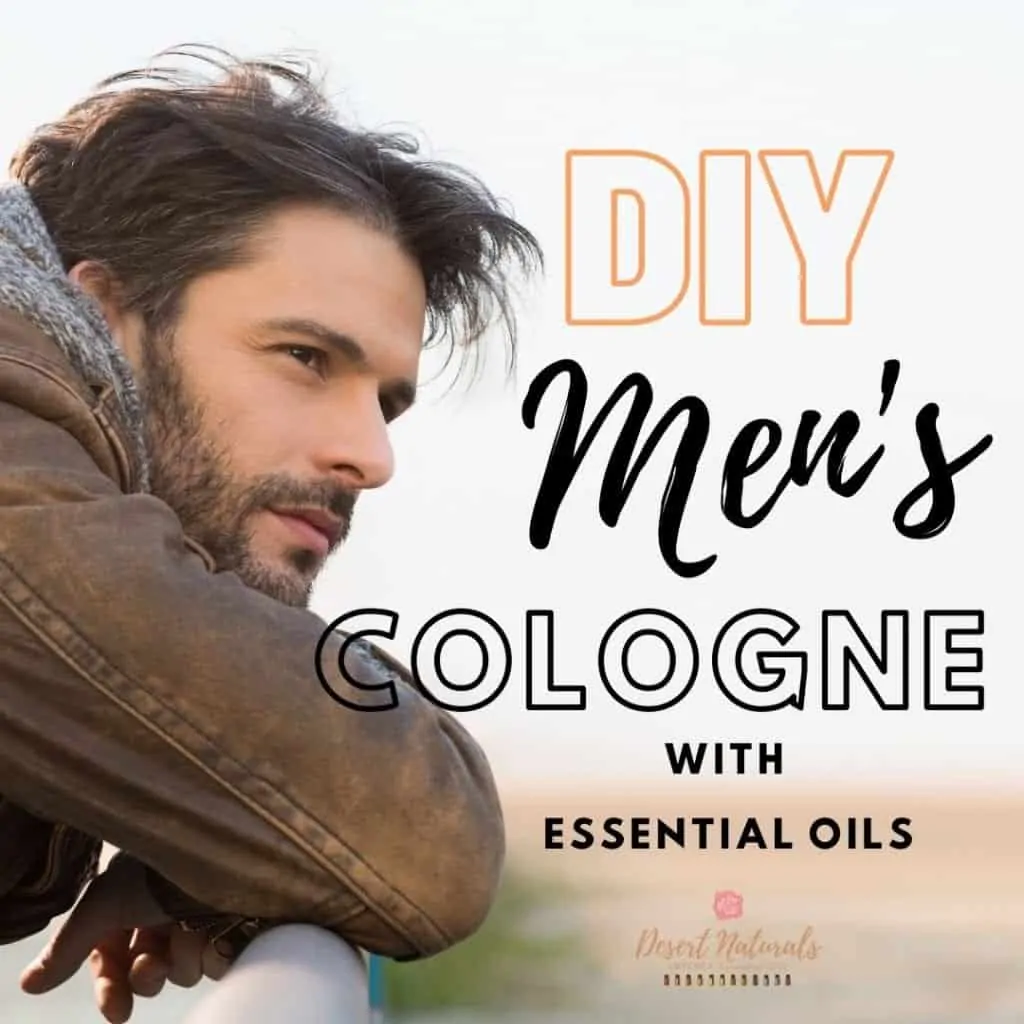
DIY Cologne essential oil blends just for men.
Before You Go, See What’s New On The Blog
- How To Dry Brush With Essential Oils For Lymphatic Drainage
- The Best Essential Oils To Support Lymphatic Drainage
- DIY Lymph Drainage Massage Cream Recipe with Herbs and Essential Oils
- DIY Conditioner Bar Recipe for Hair
- How To Make DIY Shampoo Bars: Recipe with Melt & Pour Soap
- DIY Moisturizing, Anti-Aging Lilac Lotion Recipe
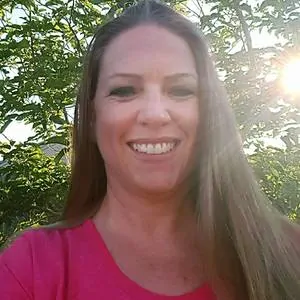
Dawn Goehring
Dawn Goehring is the founder of Desert Naturals where she writes educational articles on essential oils, DIY’s on natural beauty products, homemade cleaners, and provides related essential oil accessories like planners, trackers, tshirts, and custom designed essential oil storage. She has been featured in articles on Porch.com, Redfin.com, MommyOnPurpose and more.
Dawn has earned an aromatherapist degree and has earned a doTERRA essential oil specialist certification which is a fancy way of saying she has learned a lot about the chemistry of essential oils and how they work in the body.




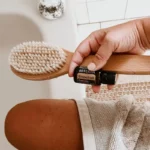

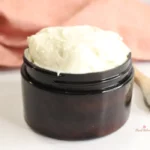
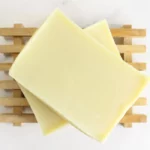
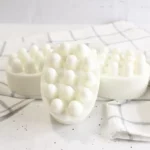
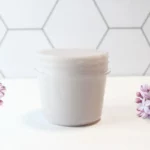
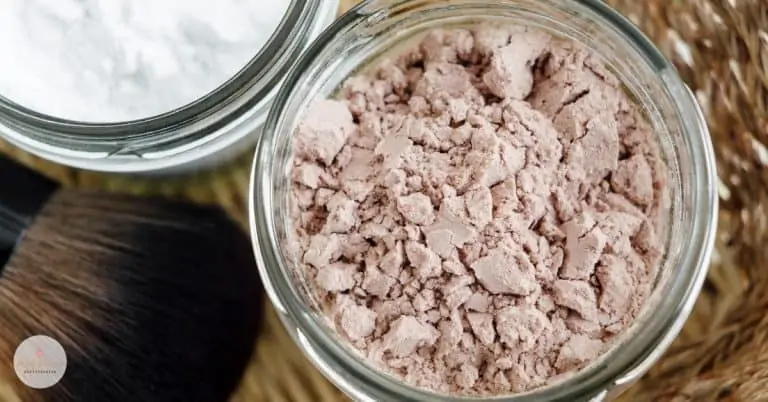
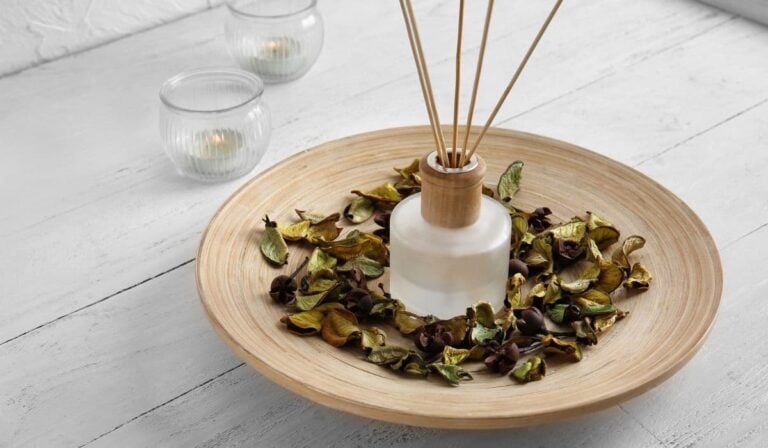
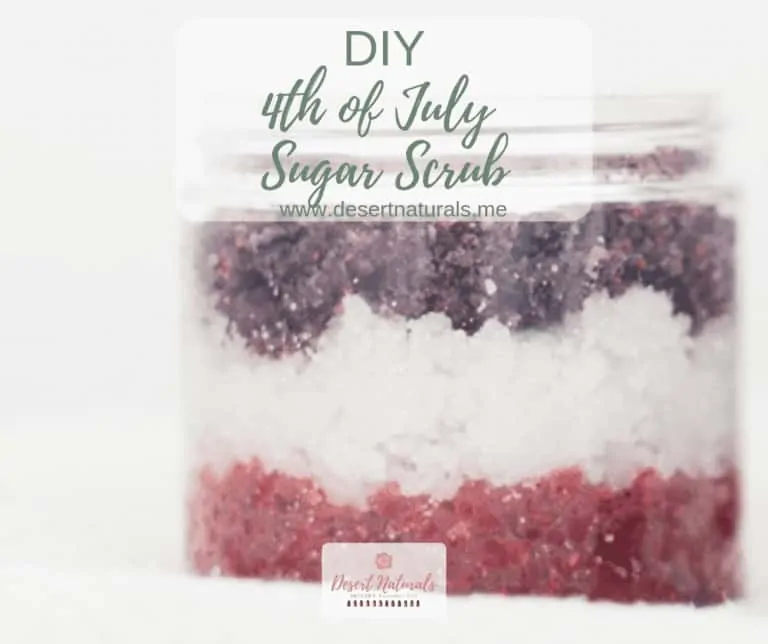
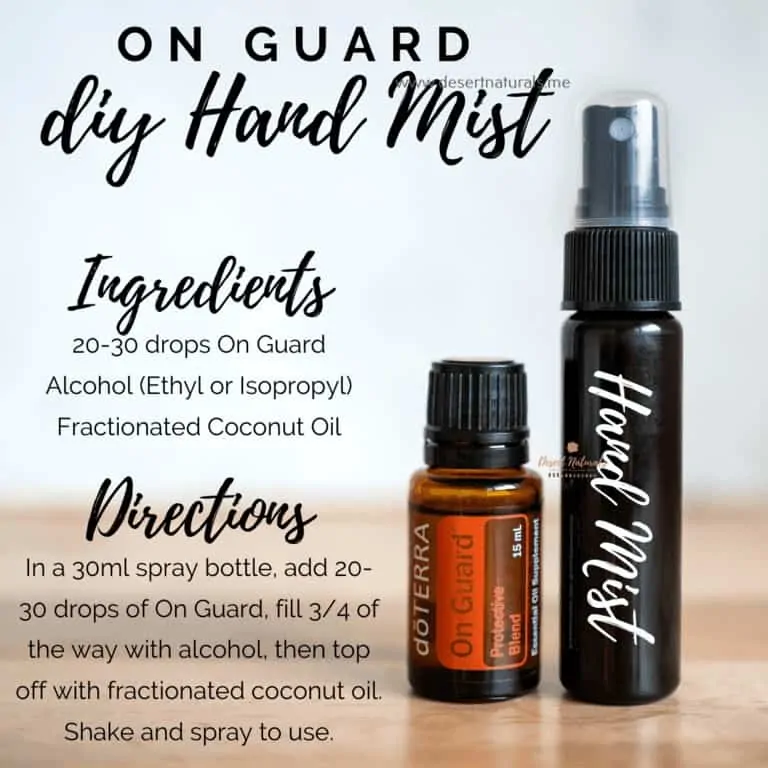
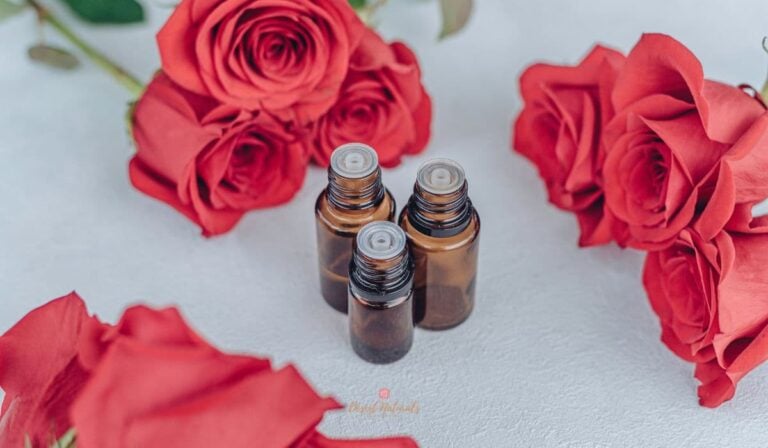
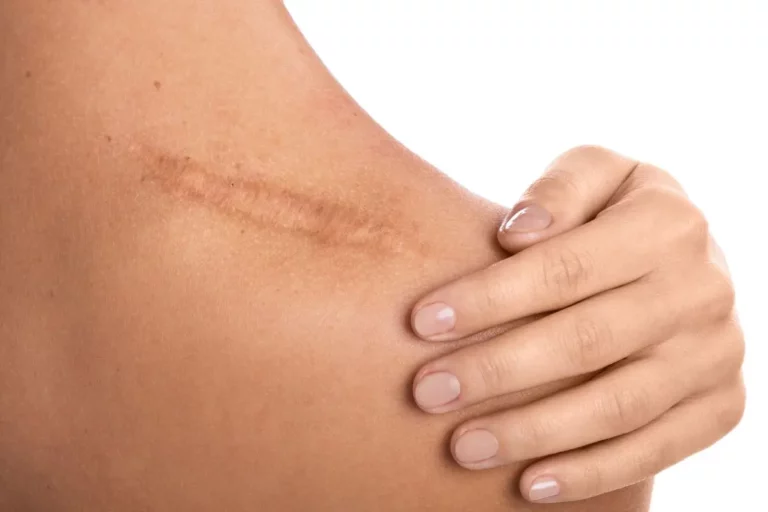
Thank you for your recipes. I have one question for you… I am wondering if you have a recipe for a honeysuckle roll on?? Or how I would go about making one. I am really new to Essential oils. Thank you so much- Judy
Hi can’t wait to try making the perfume, do you know what the shelf life is?
Hi Becky, the shelf life is as long as the essential oil’s and carrier oil’s shelf life. If you’re using doTERRA oils, it’s pretty much going to last you years.
Thank you so much for sharing your recipes. So many sites lure you in and then you find out to receive what they were talking about, you have to buy something. So frustrating! So I appreciate you being more interested in relationships and helping people learn how to use oils and educating them.
Thanks Marilyn! So glad you found me. If you haven’t already, I invite you to sign up for my email list. I share lots of extra DIY’s, diffuser blends, and more education. You can use the form at the bottom of this page to get signed up. Welcome!
New to oils and just found your site! Thank you for taking the time to share your recipes. I look forward to trying with friends and family since we all have different favorite go to oils. How would we adjust the recipe to salts or bombs?
Thanks Saundra! So glad you found me. If you haven’t already, I invite you to sign up for my email list. I share lots of extra DIY’s, diffuser blends, and more education. You can use the form at the bottom of this page to get signed up. Welcome!